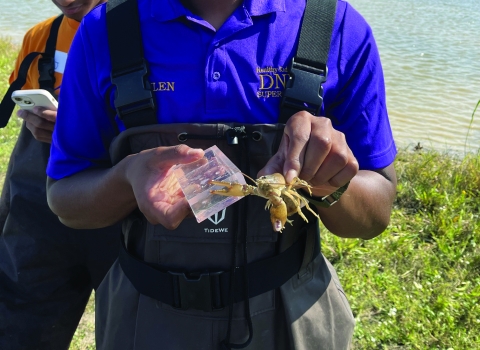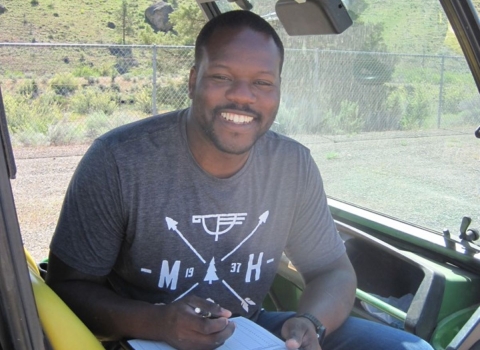Update: Due to the potential impacts of a government furlough, the U.S. Fish & Wildlife Service is extending the public comment period for the draft Environmental Assessment for Cyanobacteria Treatment in Lake Mattamuskeet. Comments are due by October 30, 2023 and may be emailed to mattamuskeet@fws.gov or mailed to Mattamuskeet NWR, 85 Mattamuskeet Rd, Swan Quarter, NC 27885.
Over the past decade, Lake Mattamuskeet has experienced declines in water quality, transitioning from a lake dominated by dense grass beds to one dominated by microscopic blue-green algae, also known as cyanobacteria. Fueled by excess nutrients, these cyanobacteria, along with the high levels of suspended sediments in the lake, block sunlight and prevent growth of submerged grasses that are very beneficial to fish and wildlife. In 2022, the U.S. Fish and Wildlife Service was approached by the University of North Carolina Institute of Marine Sciences and BlueGreen Water Technologies who had identified Lake Mattamuskeet as a potential study site for a trial treatment of cyanobacteria. After several discussions and field visits with the project team and state partners, the U.S. Fish and Wildlife Service produced a draft Environmental Assessment for the proposed cyanobacteria treatment on Lake Mattamuskeet.
In an effort to provide more concise information to the public, USFWS has developed an information sheet regarding the proposed treatment.
Proposed Cyanobacteria Treatment Information Sheet
The U.S. Fish and Wildlife Service announces the availability of this draft Environmental Assessment and is seeking comments from the public on the proposed action. Copies can be accessed at the refuge office or online at the button below.
Draft Environmental Assessment
Comments are due by October 30, 2023 and may be emailed to mattamuskeet@fws.gov or mailed to Mattamuskeet NWR, 85 Mattamuskeet Rd, Swan Quarter, NC 27885.


